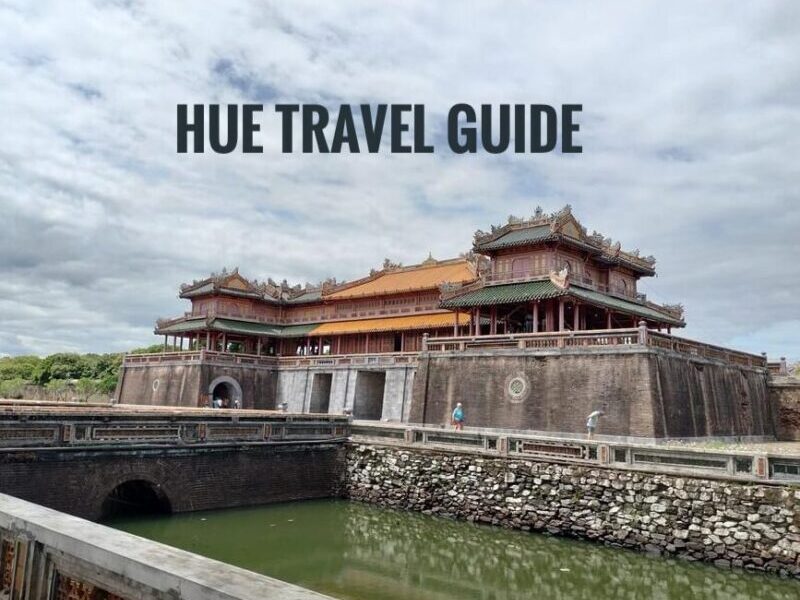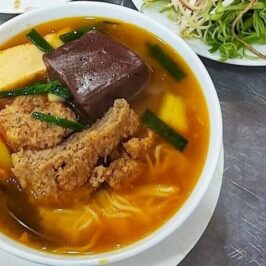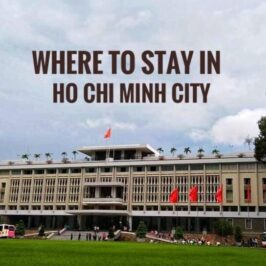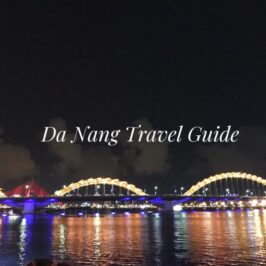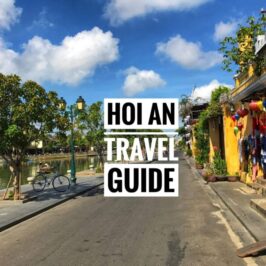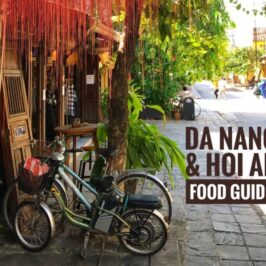Last updated on January 11th, 2025
Planning a trip to Hue? We’ve compiled all our top tips into this travel guide blog to help you plan the perfect Hue itinerary for your visit.
Hue is the former imperial capital of Vietnam during the Nguyen Dynasty. This historic city is best known for its ancient citadel, impressive tombs, and palaces, which echo the city’s rich past. Today, Hue’s UNESCO-listed monuments remind visitors of its glorious history. With its well-preserved historical sites and rich culture, Hue is not to be missed. Visitors can explore Hue’s historical sites, experience traditional Vietnamese cuisine, and discover the history of the Nguyen Dynasty.
In this Hue travel guide blog, we have compiled lots of advice and information. This itinerary takes you to the essential sights of the city, including the must-see Imperial City, royal tombs, and more.
How To Get To Hue
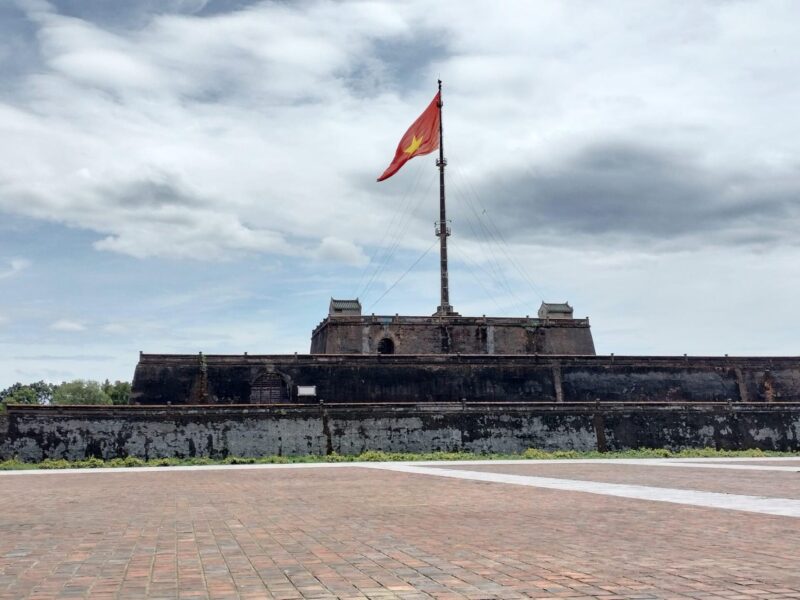
Hue is nestled between Da Nang and Hoi An, which makes it a frequent stop on most Central Vietnam itineraries. This impressive and distinctive city may be farther from the two cities, but you’re really missing out if you don’t visit Hue while you’re in Central Vietnam.
Besides, well-connected transportation also links Hue to cities such as Ho Chi Minh City or Hanoi. Transportation options for traveling to Hue as below.
Hue Travel Guide Tips: If you prefer a guided tour to Hue, you can book one through Klook or KKDAY.
From Hanoi or Ho Chi Minh City to Hue
By Airplane: Phu Bai Airport (HUI) is approximately 15 kilometers away. It offers domestic flights from major cities in Vietnam and also some internal flights.
By Train: Hue is a stop on the main north-south railway line that connects Hanoi, Ho Chi Minh City, and other major cities. Traveling by train is a memorable way to witness the Vietnamese countryside and immerse yourself in the local culture.
By Bus: Traveling to Hue by bus is a good choice for budget-conscious travelers, although it can be tiring as the journey from Hanoi takes 13 hours and from Hue to Ho Chi Minh City takes 25 hours.
From Da Nang or Hoi An to Hue
By Train: Take the scenic route by train, especially around Hue and Hoi An. The direct train from Da Nang or Hoi An to Hue takes roughly 3 hours.
By Bus: A sleeper bus is a very affordable and easy option for the 2.5-hour journey from Da Nang to Hue.
By Car or motorbike: From Da Nang City, you can enjoy a 3-hour scenic ride to Hue. This coastal road will take you through the picturesque Hai Van Pass (Hai Van Quan), winding through mountains and offering panoramic views of the South China Sea.
By Guided Tour: The most comfortable way to visit Hue from Hoi An and Danang is by joining a group tour or booking a private tour. For hassle-free, many travelers opted for tour. You can choose the join the Hue Tour departing from Da Nang or Hoi An.
Getting Around in Hue
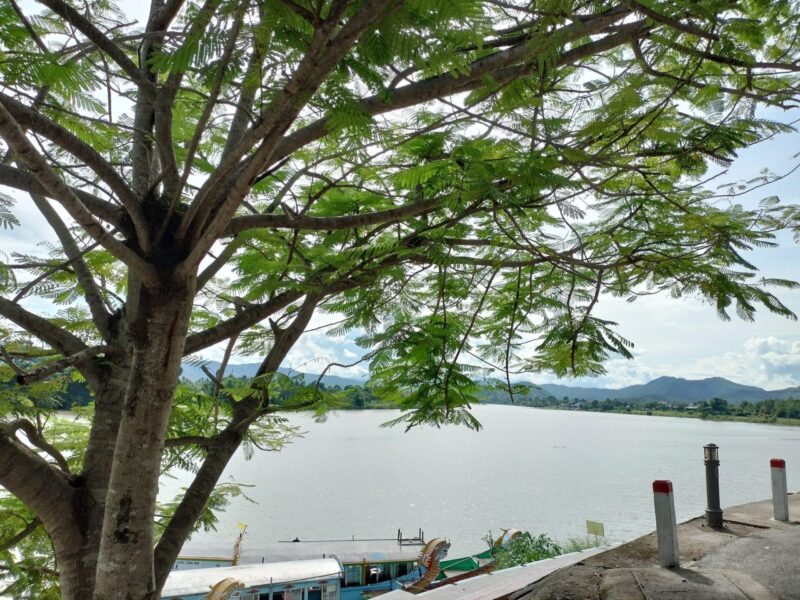
The attractions in Hue are spread out in the countryside, so it’s important to plan how to get around in Hue. Renting a bike or hiring a private car to visit the tombs on the outskirts makes exploring Hue quite feasible. You can also take a taxi or use the e-hailing service Grab to get around. However, the cost and effort involved can be exhausting.
We ultimately decided to book a Klook Tour to visit Hue, which took us to multiple locations at a reasonable price and was hassle-free.
How Many Days for Hue Itinerary
Many people make a day trip to Hue to see the Citadel and then leave. However, if you have the time, we highly recommend spending at least 2 days in Hue. This will give you the opportunity to explore the countryside, visit elaborate tombs and temples, and enjoy the great food that Hue has to offer.
While the main sights in the Hue city can be seen in one day with proper planning, you could easily spend several days sightseeing.
Where To Stay in Hue
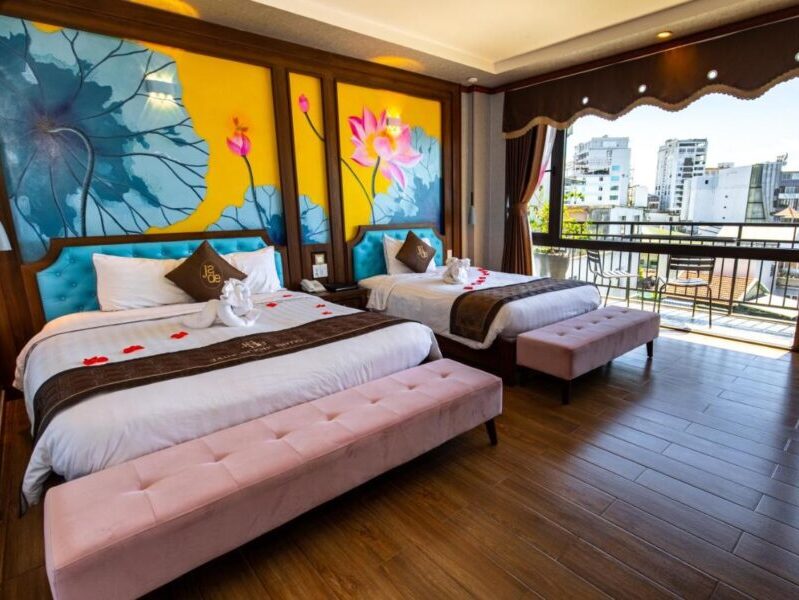
Hue is a budget friendly destination with affordable accommodations. Travelers can choose from a range of high-end to luxurious options based on their budget and interests. Taking things slow is the best way to truly experience a country and find more affordable places to stay.
Below are some accommodation options for your trip to Hue:
High-Range: Melia Vinpearl Hue is a luxurious boutique hotel situated in the heart of Hue city center. It offers elegant rooms, personalized service, and a rooftop bar with stunning city views. The spacious rooms come with ample amenities. The hotel is conveniently located just a 15-minute walk from the walking street, where you can find numerous restaurants, bars, and clubs.
Mid-Range: Jade Scene Hotel is a boutique hotel that seamlessly combines art and luxury. It features well-appointed rooms and an outdoor pool with panoramic city views. The location is perfect, close to restaurants and nightlife, yet situated on a quiet street.
Mid-Budget: Hue Nino Hotel is a charming little hotel located on a quiet street near the restaurant quarter of Hue. The staff are incredibly accommodating, and the hotel offers a good breakfast, convenient location, and great value for money.
Budget: Nana Homestay and Villa is a lovely family-owned homestay located in a tranquil setting. The simple rooms have all the necessary amenities for a comfortable stay, making it a great choice for group friends at a very reasonable price.
Planning For Hue Itinerary
A Hue itinerary wouldn’t be complete without exploring the city’s impressive citadel and royal tombs, and trying out Hue’s local cuisine. Many travelers visit Hue as part of their itinerary to Central Vietnam. A day trip to see the main sights in Hue is doable. If you’re fascinated by Hue’s history and architecture, you could easily spend days exploring the city.
Here is what to do and see for Hue itinerary:
- Hue Imperial City (The Citadel)
- Thien Mu Pagoda
- Visit the Hue Seven Imperial Tombs. Popular options: Tu Duc Tomb, Minh Mang Tomb, Khai Dinh Tomb
- Learn Traditional Incense-making Craft at Incense Village
- Eat Hue Local Cuisine
Hue Travel Guide Tips: It’s possible to pre-book a tour to Hue before arriving in Vietnam. Click here to book your day trip to Hue.
Hue Imperial City (The Citadel)
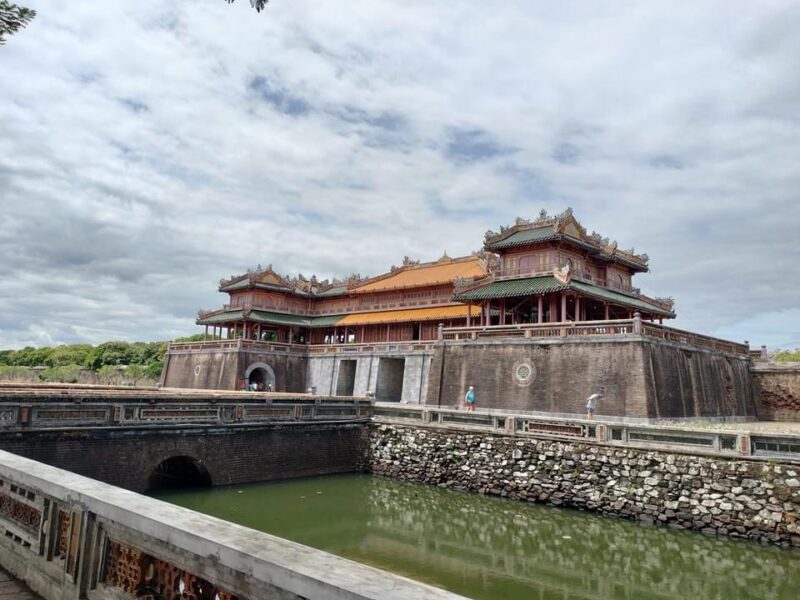
There’s no better place to start your Hue itinerary than the Imperial City. It was the former Imperial capital of Vietnam and was once the seat of power during the Nguyen Dynasty. The site offers a glimpse into Vietnam’s vibrant culture and history. A must-visit place when in Hue.
The best thing is, it’s conveniently located right in Hue’s city centre.
The Hue Imperial City is a walled compound with sprawling palaces, temples, and gardens that transport you back in time to the Nguyen Dynasty. You can tour the Citadel to see the Forbidden City and its majestic landscape. We were captivated by the elaborate architecture and learned about the Nguyen Dynasty’s fascinating ceremonies.
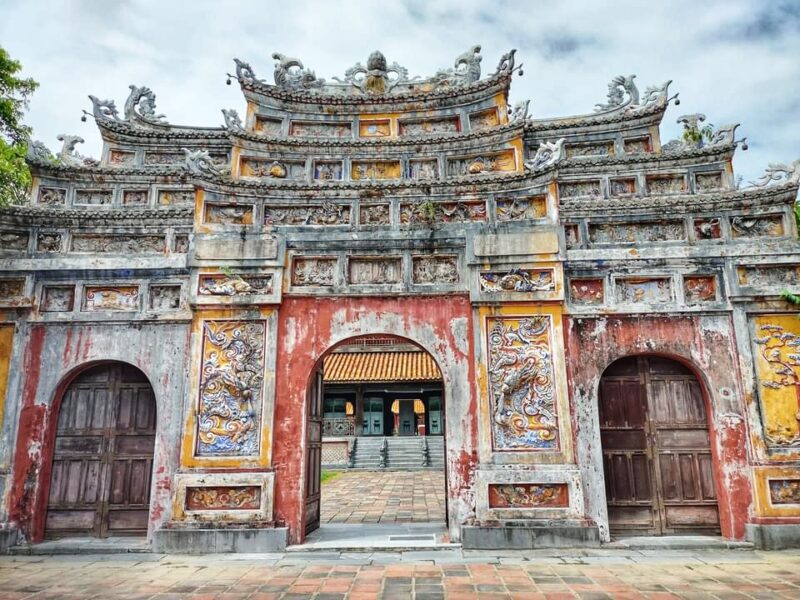
Exploring its many courtyards and pavilions can be a fascinating experience. There are arrows and signs throughout the grounds indicating the best path to follow. All of the buildings are beautiful with so much colorful and fine detail.
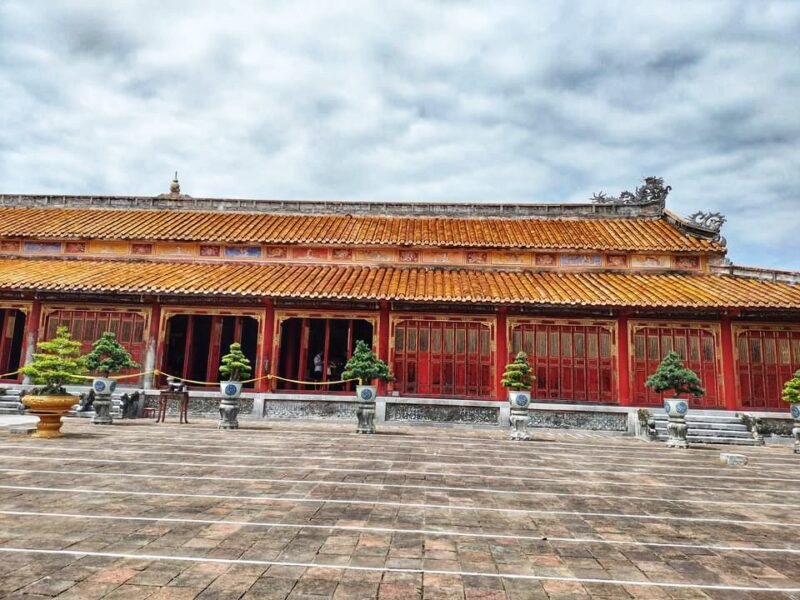
The To Mieu Temple (Thế Tổ Miếu / 世祖廟) is one of the highlights. It is an ancestral temple dedicated to Vietnam’s emperors in the Imperial City. Its construction was ordered by Emperor Minh Mạng in 1822, and its purpose was to worship past emperors of the Nguyễn Dynasty.
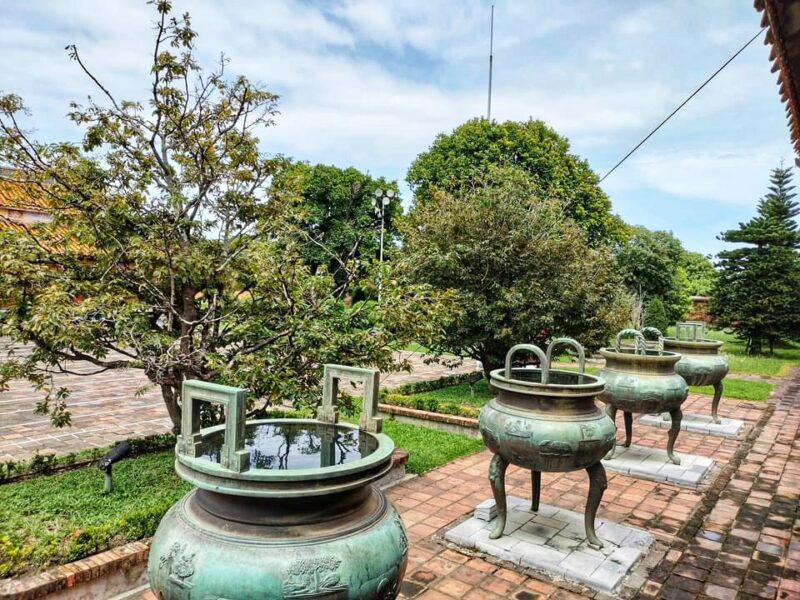
The citadel is a vast site and it is best to allocate two to three hours to visit the Imperial City. The entry fee is 200,000 VND per person and an audio guide can be borrowed for 100,000 VND. There are also tour guides outside if you would prefer someone to take you around.
Hue Imperial City (The Citadel)
Opening hours: Daily from 7:30 to 17:00
Entrance fee: 200,000 VND (Combo Ticket Option Available)
Thien Mu Pagoda
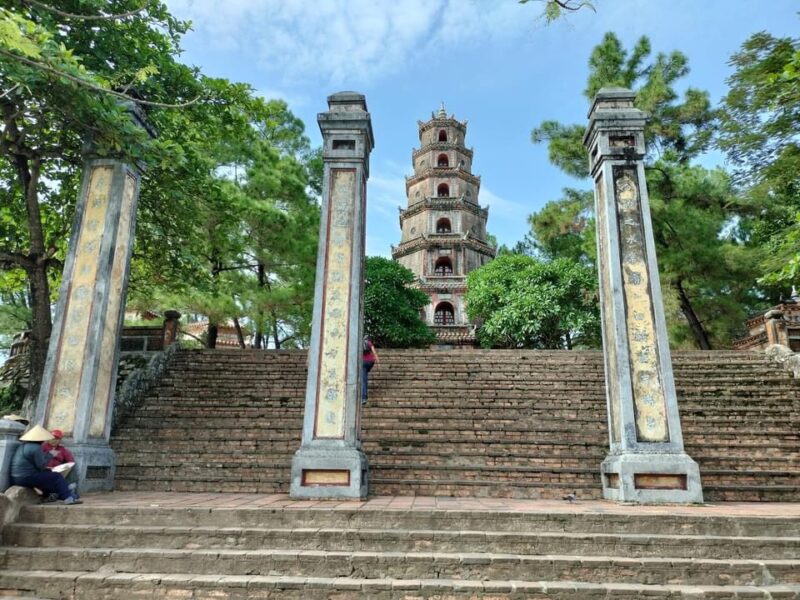
Next up is Thien Mu Pagoda, also known as the Linh Mu Pagoda.
Build in the 1800s, Thien Mu Pagoda is an iconic site in Hue with an interesting history. The striking 7-story octagonal tower, as well as a marble turtle to symbolize longevity, are among its notable features. The pagoda’s elegant architecture, blending seamlessly with the lush surroundings, creates a captivating atmosphere that left us in awe.
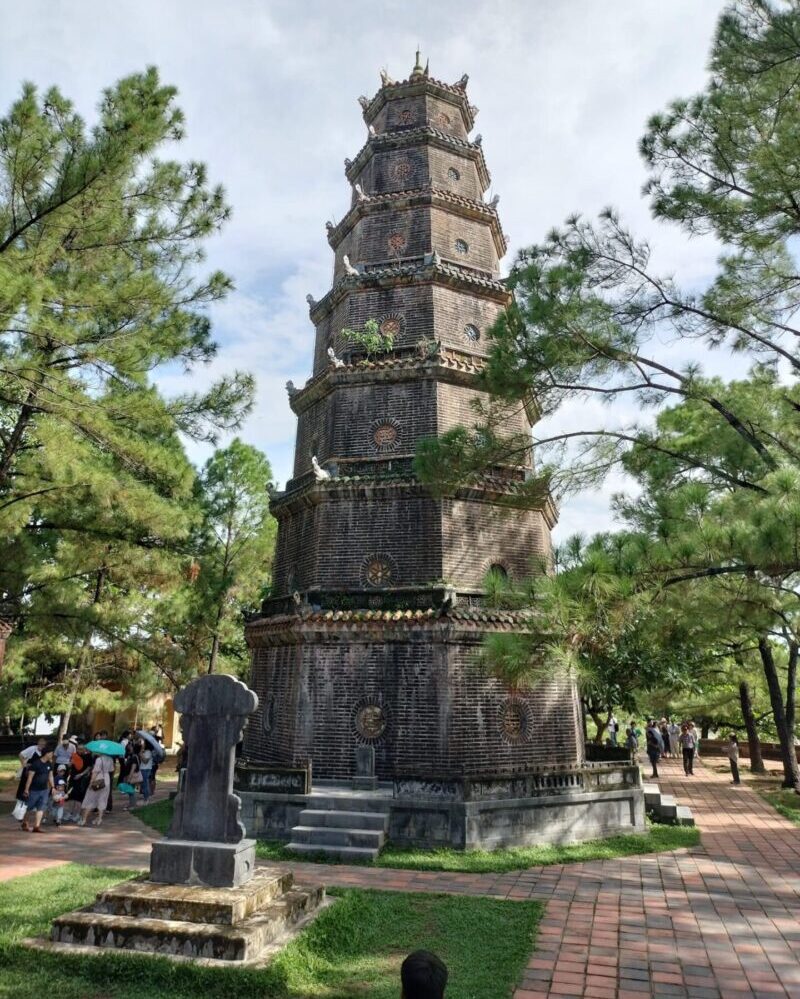
The pagoda itself is beautiful, and its location above the Perfume River gives an air of tranquility. Although you can’t climb up the pagoda, you can take a peaceful stroll in the grounds. In addition to the pagoda, the site features gardens and artifacts that reflect the peaceful Buddhist ethos.
Thien Mu Pagoda
Opening hours: Daily from 8:00 to 17:00
Entrance fee: Free!
Hue Royal Tombs
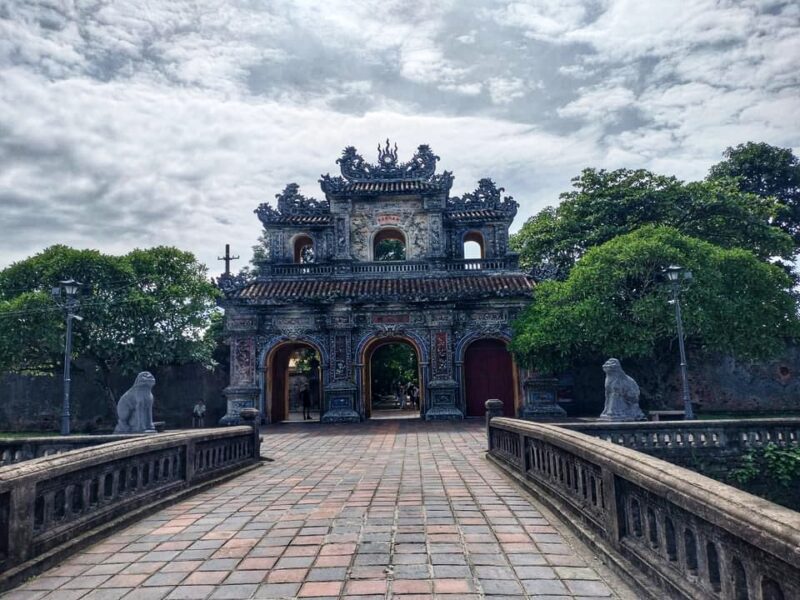
When visiting Hue, you can’t miss exploring the Royal Tombs. These tombs are the final resting places of the Nguyen emperors who ruled Vietnam (under French blessing) from 1802-1945. Stepping into these ancient monuments offers an immersive journey into one of Vietnam’s most vibrant historical periods. It also provides a captivating insight into Hue’s rich heritage and royal past.
Given its imperial history, there are several imperial tombs that you can visit. The seven royal tombs including: Duc Duc Tomb, Tu Duc Tomb, Dong Khanh Tomb, Thieu Tri Tomb, Minh Mang Tomb, Khai Dinh Tomb, and Gia Long Tomb. These Imperial Tombs are recognized as UNESCO World Heritage Sites.
Among all the royal tombs, the Khai Dinh Tomb, Minh Mang Tomb, and Tu Duc Tomb are the most popular places to visit. These three royal tombs are located close to each other and just a few kilometers from the city. Each boasts unique designs and intriguing elements to explore. It is best to include them on your Hue itinerary. Unfortunately, we didn’t have enough time to visit the Khai Dinh Tomb during our tour.
Tu Duc Tomb
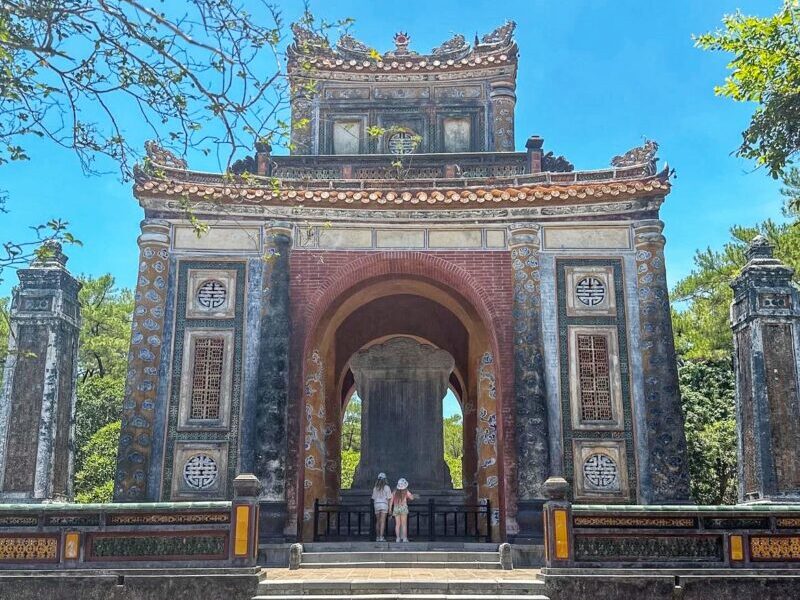
Emperor Tu Duc was the longest-reigning monarch of the Nguyen Dynasty (1848-1883). He began planning his tomb long before his death in 1883. Over 50,000 soldiers worked on the project, yet Tu Duc was actually laid to rest at a secret location in Hue.
Tu Duc Tomb is located near Hue city, approximately 7 minutes away from Thien Mu Pagoda. It’s best to visit them together.
Compared to Khai Dinh Tomb and Minh Mang Tomb, Tu Duc Tomb has a more traditional and peaceful vibe. The compound is located in a beautifully landscaped area with many Chinese influences. The tomb grounds are lovely, featuring ponds filled with coy fish. Roof tops adorned with beautiful dragons, and several bonsai trees in the courtyard. Inside, visitors can see amazing furniture like a carrier for the king and learn about the Nguyen dynasty. Visitors should plan to allow approximately 30 minutes minimum for a visit.
Tu Duc Tomb
Opening hours: Daily from 8:00 to 17:00
Entrance fee: 150,000 VND (Combo Ticket Option Available)
Minh Mang Tomb
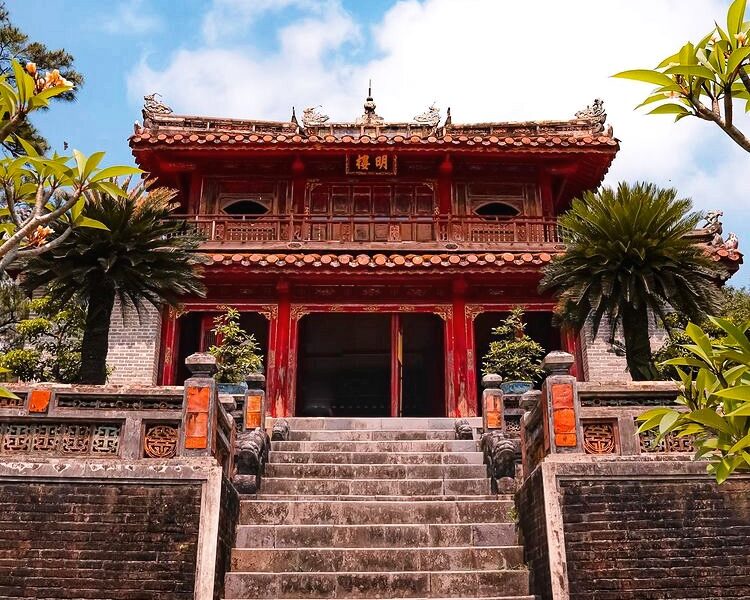
The Minh Mang Tomb, also known as the Mausoleum of Emperor Minh Mang, is a must-see attraction on any Hue Royal Tombs tour. It offers a fascinating glimpse into Vietnamese history and culture. Visitors can learn a great deal about the sacred rituals and symbolism incorporated into the tomb’s design.
The Minh Mang Tomb is also highly regarded as one of the most impressive tombs in Hue. It is included in most of the Hue Tour itinerary, and the one tomb to visit if time is limited.
Upon entering, you will be surrounded by intricate carvings, ornate statues, and exquisitely painted buildings. Visitors are also immersed in the picturesque scenery and can enjoy wandering through the courtyards while soaking up the history and tranquility. The blend of architecture, art, and nature is truly awe-inspiring.
Minh Mang Tomb
Opening hours: Daily from 7:00 to 17:00
Entrance fee: 150,000 VND (Combo Ticket Option Available)
Khai Dinh Tomb
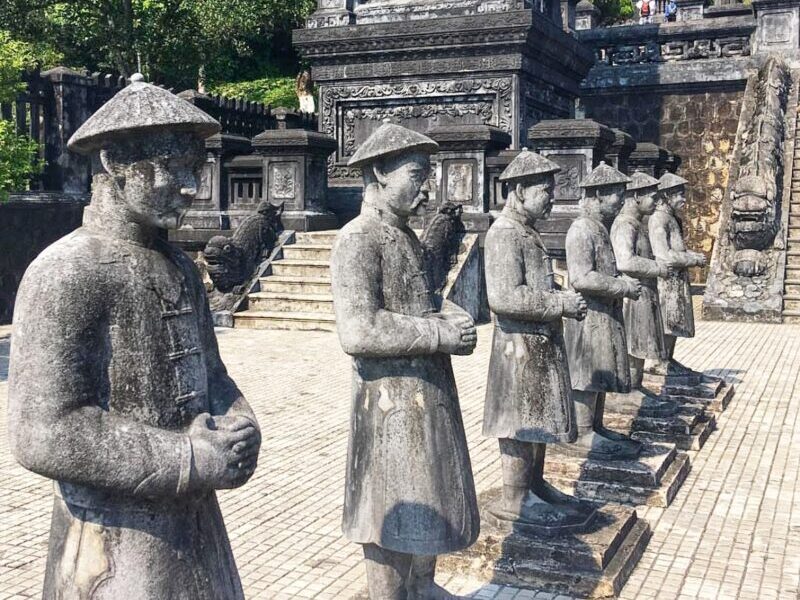
Lastly, Khai Dinh Tomb is one of Hue’s most visited attractions. It is one of the most recently built tombs in Hue, renowned for its mesmerizing architecture and historical value.
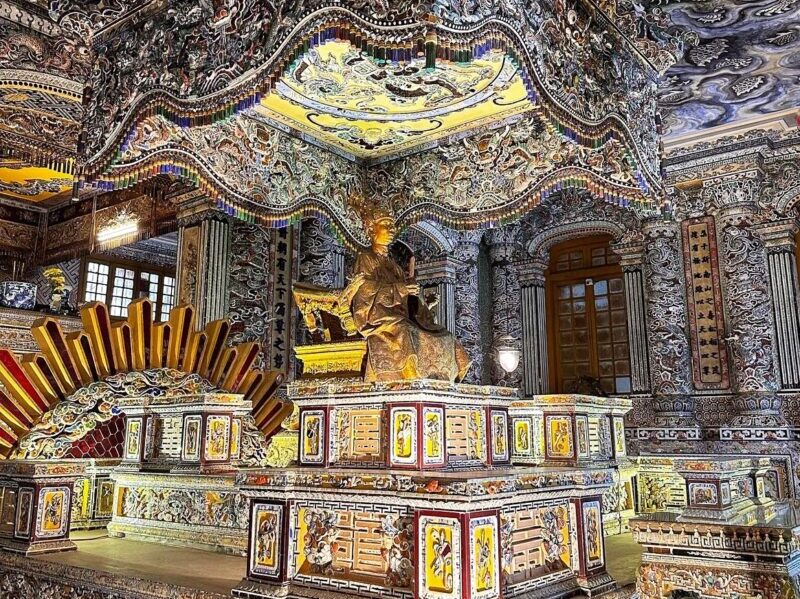
Built from 1920 to 1930, Khai Dinh Tomb is characterized by Vietnamese, Chinese, and French influenced architecture and ornaments. The facades, ceilings, and canopy are all elaborately decorated. The grounds are beautiful and filled with stone statues of soldiers, horses, and elephants. There is also an amazing view of the surrounding countryside from the top.
Khai Dinh Tomb
Opening hours: Daily from 7:00 to 17:00
Entrance fee: 150,000 VND (Combo Ticket Option Available)
Learn Traditional Incense-making Craft at Incense Village
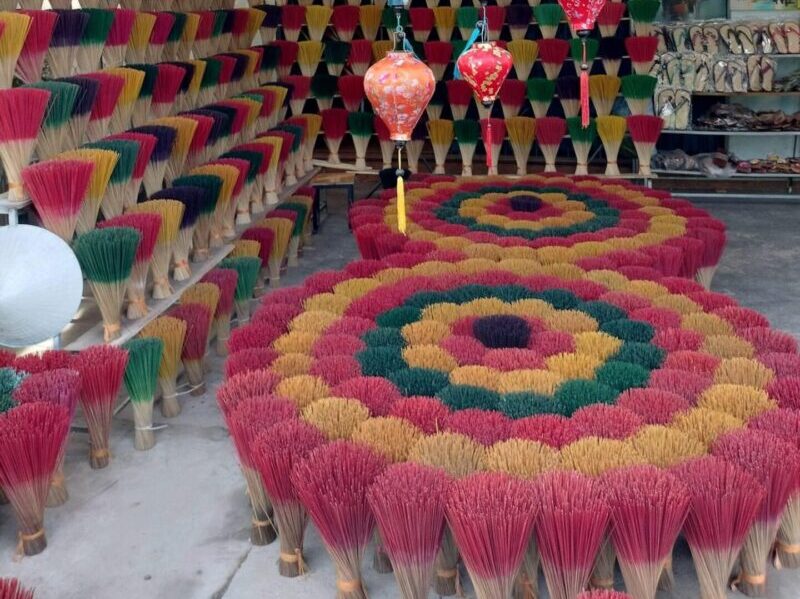
Dating back about 700 years, the traditional incense-making craft in Hue has been established since the time of the Nguyen Dynasty. Historically, the incense village supplied incense to the royal court and the people in the Thuan Hoa – Phu Xuan region. Today, the incense village continues to produce incense using natural ingredients in the traditional way it has for centuries. Hue takes pride in its craft.
One of the most appealing factors drawing tourists to Incense Village in Hue is its picturesque scenery featuring colorful and striking incense bundles. Under the gentle sunlight, each bundle of incense unfurls in vibrant colors like blooming flowers. The colors and displays have evolved to cater to tourists’ tastes.
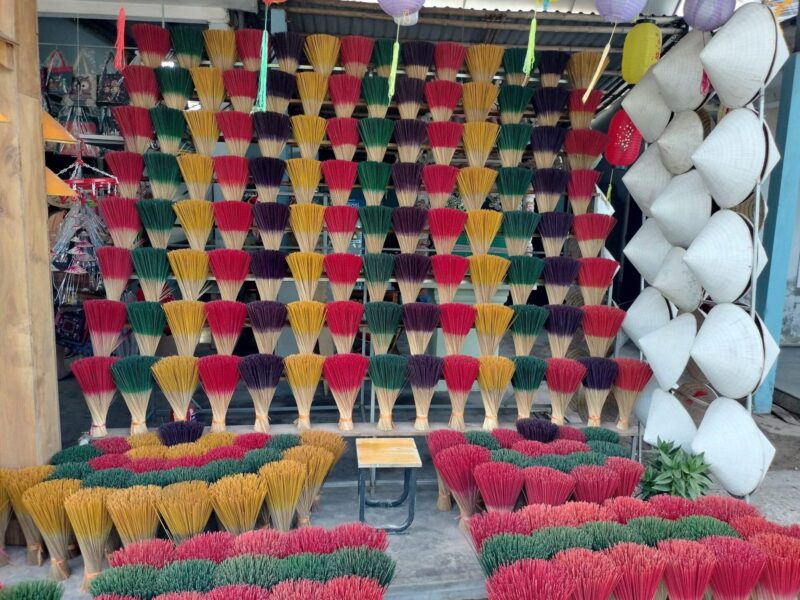
Thuy Xuan Village in Hue is a popular tourist destination located near Tu Duc’s tomb and is often included in full or half-day city tours. Visitors have the opportunity to learn about the traditional incense-making craft and take plenty of beautiful photos. Consider to include this into your Hue itinerary.
Eat Hue Local Cuisine
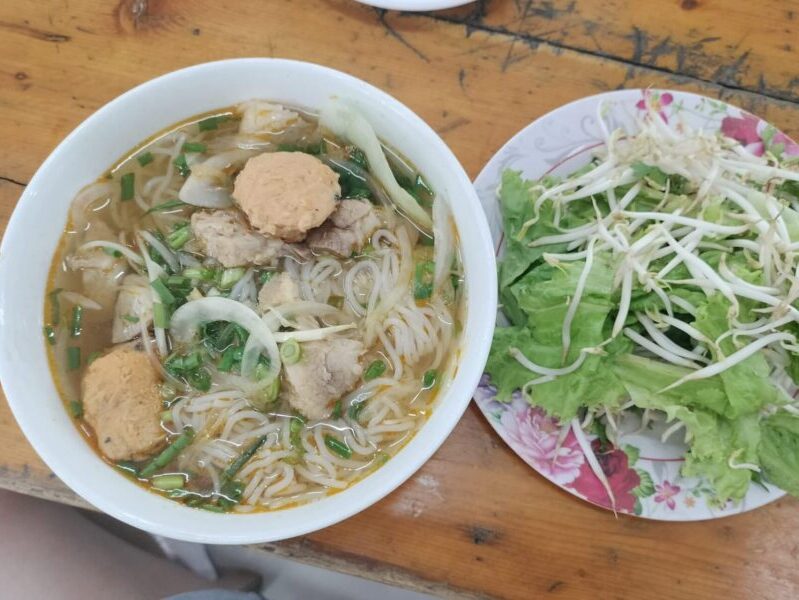
Vietnam is renowned for its cuisine. With an abundance of great food in Hue, you are sure to discover delightful options. Among all the local Hue cuisine, my favorites are Bun Bo Hue and Bun Thit Nuong. They are a must-try when visiting Hue.
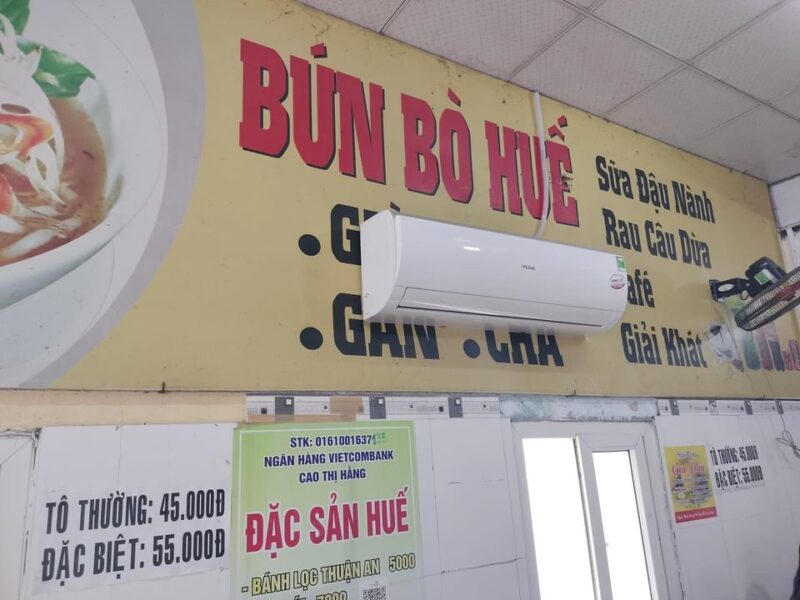
Here are some of the best food to eat in Hue:
Bun Bo Hue: This spicy beef noodle soup with vermicelli noodles rival Pho. It uses flat noodles and tangy lemongrass broth, making it the most popular Hue food in Vietnam.
Banh Uot Thit Nuong (Rice Noodle Rolls with Grilled Pork): This is a famous Vietnamese food in Hue. The dish is served with barbecued meat, noodle rolls, dipping sauce, local herbs, and vegetables.
Bun Thit Nuong (Vermicelli with Grilled Pork): This dish is one of the iconic treats of Hue cuisine. Its ingredients are simple, including vermicelli, pork, pickles, peanuts, and fish sauce.
Nem Lui: This lemongrass pork skewers dish is always something tourists cannot leave without taking a bite of. Nem Lui is best when eaten hot with rice paper, local herbs, and the signature dipping sauce.
Banh Khoai: Another Hue specialty, these crispy fried pancakes are filled with prawns, pork, shallots, and bean sprouts. It’s greasy and crispy from deep-frying and has to be eaten with salad and dipping sauce.
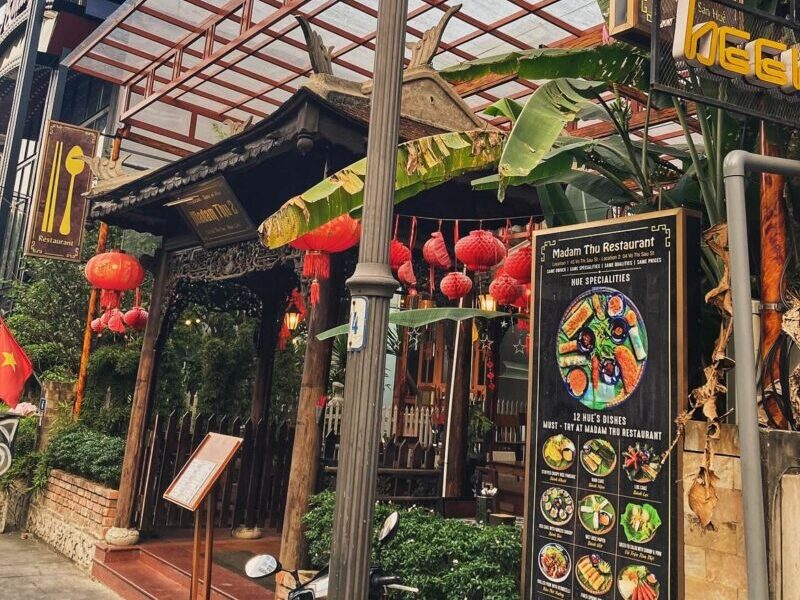
Where To Eat in Hue:
One of my favorite places to eat in Hue is Madam Thu Restaurant. This charming restaurant is located on Hue Night Walking Street and is easy to find. The restaurant exudes character from the moment you step in.
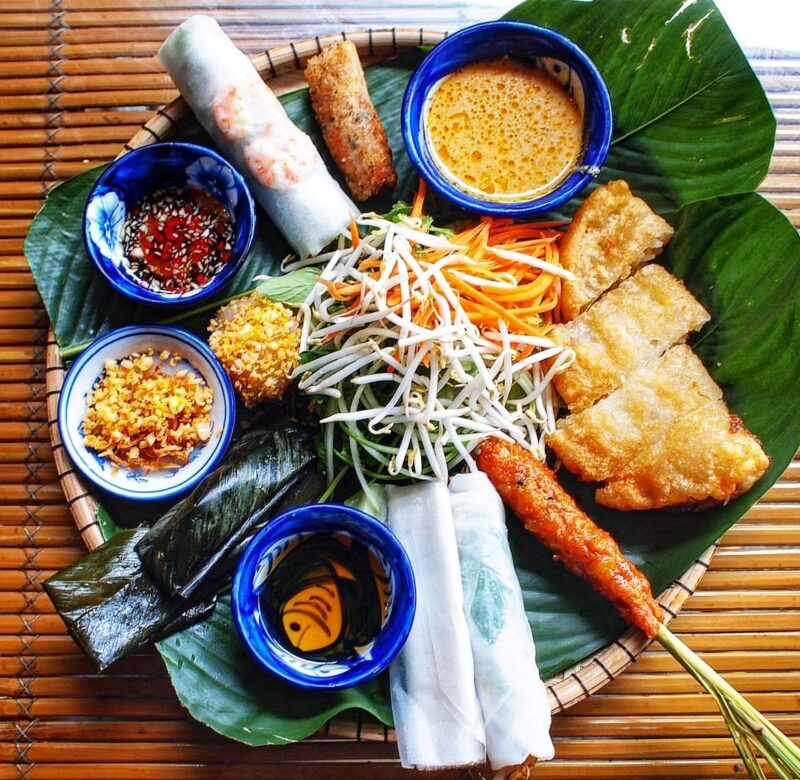
There are many local food options on the menu. You can even order a tasting plate with all of Hue’s specialty dishes. The food is well-presented, and the staff will also explain how to eat it correctly.
More Time for Hue Itinerary?
For an unforgettable experience in Central Vietnam, you should consider extending your trip to Da Nang and Hoi An. Da Nang offers a vibrant cityscape with beautiful beaches, impressive bridges, and picturesque mountains, while Hoi An enchants with its charming ancient town and rich cultural heritage. Spending 5 to 7 days in Central Vietnam would be wonderful!
Further Read: Central Vietnam itinerary: A Travel Guide Blog
Overall: A Visit to Hue
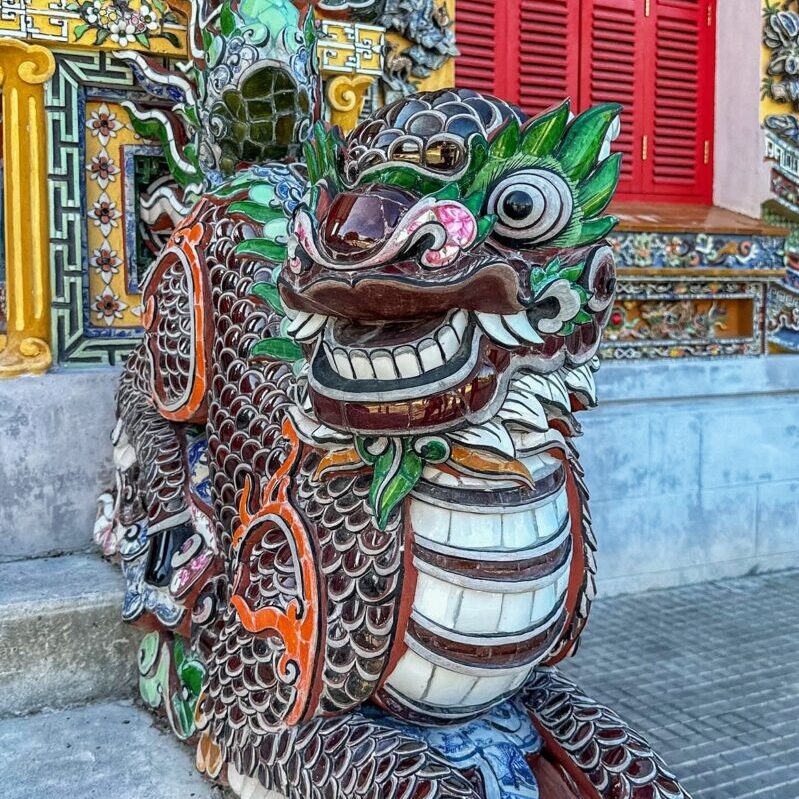
All in all, we hope this travel guide blog helps you plan your Hue itinerary. Hue is a great place to visit for its impressive ancient citadel, royal tombs, and delicious food. We didn’t expect too much when visiting Hue, but it ended up being one of the most memorable trips in Vietnam. Plan your trip and head to Hue for a colorful getaway like no other!
More Central Vietnam to Da Nang and Hoi An travel blog posts:
- Central Vietnam Itinerary: A Travel Guide Blog
- Things to Do in Da Nang: A Travel Guide Blog
- Where To Stay in Da Nang: Best Areas and Hotels
- Things To Do in Hoi An: A Complete Travel Guide
- Where To Stay in Hoi An: Best Homestay and Hotels
Traveling to Northern Vietnam:
- Things To Do in Hanoi Itinerary: A Travel Guide Blog
- Where To Stay in Hanoi: Best Areas and Hotels
- A Trip To Halong Bay: Ultimate Travel Guide Blog
- Things To Do in Sapa Itinerary: A Travel Guide Blog
- Where To Stay in Sapa: Best Hotels and Homestays
Traveling to Ho Chi Minh City? Feel free to read on our Saigon travel stories.
Lastly, traveling to Phu Quoc? Feel free to read on our Phu Quoc travel stories.
